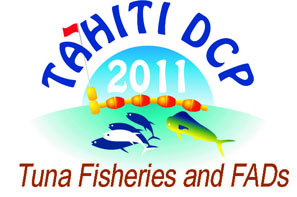Do seamounts act as mooring FADs?
1 : University of the Azores
(UAç)
* : Corresponding author
R Dr Frederico Machado, 9900, Horta -
Portugal
Seamounts have been identified as hotspots for pelagic biodiversity and some have also been identified as aggregating locations for some tuna species Thus seamounts may act as moored FADs where catch rates can potentially be higher than in the open ocean Their importance for tuna fisheries has not been demonstrated and the contribution of seamounts to fisheries catch is still poorly estimated Although a relatively common feature in oceanic ecosystems little information is available that identifies those that are biologically important Improved knowledge offers opportunities for unique management tuna stocks which may advance the sustainable management of oceanic resources In this study we evaluate the existence of an association between seamounts and tuna longline fisheries at the ocean basin scale identify significant seamounts in aggregating tuna in the western and central Pacific Ocean and quantify the seamount contribution to the tuna longline catch We use data collected for the Western and Central Pacific Ocean for bigeye yellowfin and albacore tuna at the ocean basin scale GLMs were applied to a coupled dataset of longline fisheries catch and effort and seamount location information The analyses show that seamounts may be associated with an annual longline combined catch of 35 thousand tonnes with higher catch apparent for yellowfin bigeye and albacore tuna on 17 14 and 14 of seamounts respectively In contrast 14 18 and 20 of seamounts had significantly lower catches for yellowfin bigeye and albacore tuna respectively Studying catch data in relation to seamount positions presents several challenges such as bias in location of seamounts or lack of spatial resolution of fisheries data Whilst we recognize these limitations the criteria used for detecting significant seamounts were conservative and the error in identification is likely to be low albeit unknown Seamounts throughout the study area were found to either enhance or

 PDF version
PDF version
